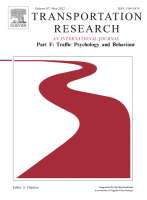 Highlights
Highlights
- A population-based analysis of 33,249 virtual driving assessments of new drivers at the time of licensure revealed 20 Skill Clusters that were then grouped into 4 major summary “Driving Classes”.
- These Skill Clusters and Driving Classes were differentially associated with subsequent performance on the on-road licensing examination (showing criterion validity).
- These Skill Clusters and Driving Classes also had different distributions by sex and age, possibly reflecting age-related licensing policies in Ohio.
Abstract
Motor vehicle crash rates are highest immediately after licensure, and driver error is one of the leading causes. Yet, few studies have quantified driving skills at the time of licensure, making it difficult to identify at-risk drivers before independent driving. Using data from a virtual driving assessment implemented into the licensing workflow in Ohio, this study presents the first population-level study classifying degree of skill at the time of licensure and validating these against a measure of on-road performance: license exam outcomes. Principal component and cluster analysis of 33,249 virtual driving assessments identified 20 Skill Clusters that were then grouped into 4 major summary “Driving Classes”; i) No Issues (i.e. careful and skilled drivers); ii) Minor Issues (i.e. an average new driver with minor vehicle control skill deficits); iii) Major Issues (i.e. drivers with more control issues and who take more risks); and iv) Major Issues with Aggression (i.e. drivers with even more control issues and more reckless and risk-taking behavior). Category labels were determined based on patterns of VDA skill deficits alone (i.e. agnostic of the license examination outcome). These Skill Clusters and Driving Classes had different distributions by sex and age, reflecting age-related licensing policies (i.e. those under 18 and subject to GDL and driver education and training), and were differentially associated with subsequent performance on the on-road licensing examination (showing criterion validity). The No Issues and Minor Issues classes had lower than average odds of failing, and the other two more problematic Driving Classes had higher odds of failing. Thus, this study showed that license applicants can be classified based on their driving skills at the time of licensure. Future studies will validate these Skill Cluster classes in relation to their prediction of post-licensure crash outcomes.
Authors
- Elizabeth A. Walshe
- Michael R. Elliott
- Daniel Romer
- Shukai Cheng
- Allison E. Curry
- Tom Seacrist
- Natalie Oppenheimer
- Abraham J. Wyner
- David Grethlein
- Alexander K. Gonzalez
- Flaura K. Winston

